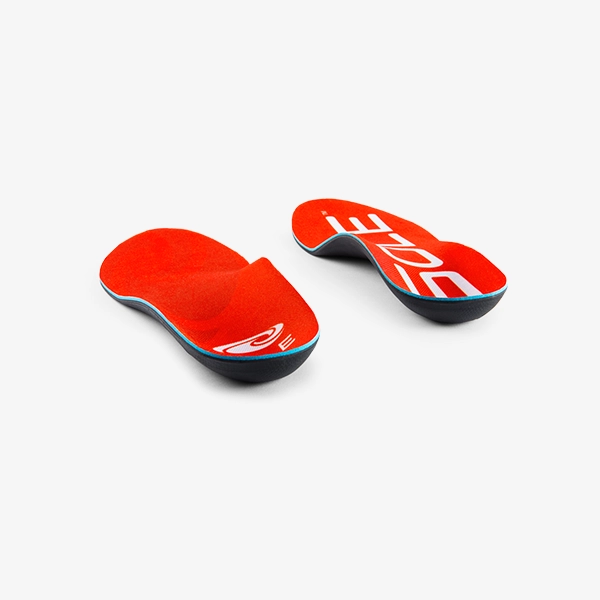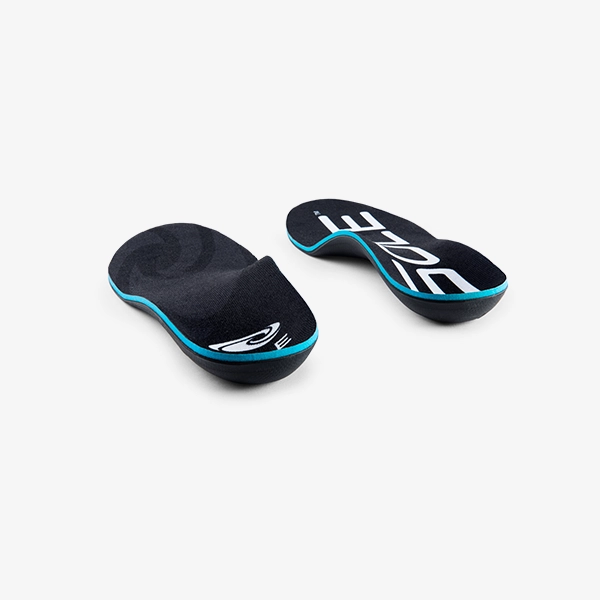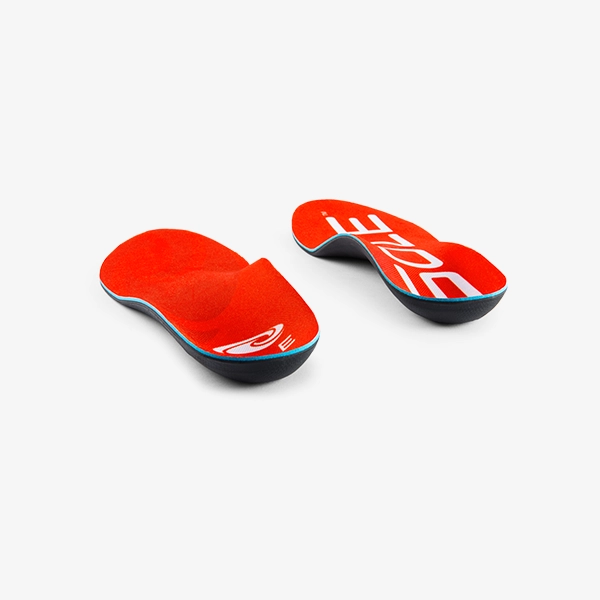Adding supportive insoles to your pickleball shoes can help improve your balance, footwork and endurance while preventing fatigue and injury in your feet. But if you’re on the hunt for pickleball shoe inserts, what should you look out for?
Let’s take a look at the essential elements of an effective insole for pickleball, and why SOLE footbeds are the best pickleball orthotics you can get.
A selection of SOLE footbeds loved by pickleball players.
Supportive insoles for pickleball.
The best pickleball insoles include at least a moderate level of arch support. This support helps the feet carry their load while on the pickleball court. Supporting the arch from below reduces strain placed on the foot, helping prevent fatigue, pain and injury so you can play more comfortably for longer.
Arch support also helps reduce strain placed on the foot's major ligaments and bones, like the plantar fascia ligament. Plantar fasciitis is the most common foot affliction suffered by people in North America. The right supportive insoles in your pickleball shoes will help you avoid the risk of plantar fasciitis.
If you already struggle with plantar fasciitis, or other stress-related ailments, reducing strain in your feet by supporting them from beneath will help your feet recover. SOLE footbeds are clinically proven to reduce plantar fascia strain by an average of 34%.
Pickleball insoles to encourage neutral alignment.
A good pickleball insole should also include a deep heel cup. The deep heel cup cradles your heel’s fatty tissue under the heel bone to make the most of your body’s natural cushioning. This protects the feet during impact.
The deep heel cup also works in tandem with proper arch support to promote neutral alignment in your feet, ankles, knees and hips. This neutral alignment improves efficiency in your body’s entire kinetic chain or chain of motion, preventing unnecessary strain on your joints.
People with biomechanical issues like overpronation can benefit especially from pickleball insoles, but having neutral alignment can help improve anybody’s pickleball. Proper alignment provides a stable base for your body to work on, helping to improve balance and confidence in every movement on the pickleball court.
All SOLE footbeds feature the same Signature Supportive Shape. This shape combines a deep heel cup with arch support that’s unmatched in over-the-counter insoles.
“No foot pain or cramps during or after pickleball! Just what I was hoping for.” - Robert on the Active Medium with Met Pad.
Custom moldable insoles for court sports.
When it comes to moving across the pickleball court, quick changes of direction and rapid movements are very much part of the game. Moving forward and back, and side to side can place a lot of strain on one part of your foot at a time.
SOLE footbeds all custom mold to the wearer’s feet either by wearing over a few days, or heat molding in an oven at home. Once molded, they stay in constant even contact with the bottom of your foot. You can think of it as having a dynamic second skin under your foot.
As the insole absorbs pressure during a step, it distributes that pressure across your whole foot. This helps prevent excess strain on any one part of your foot or ankle.
Cushioned insoles for pickleball.
If you’re new to a sport like pickleball your feet might not be used to the repeated stress of repetitive impacts. Having an insole in your pickleball shoes with some good cushioning can be a big help for absorbing that impact. Be aware that cushioning on its own is not going to give you the support you need.
Think of it like a mattress for your feet. A mattress that is too soft fails to support your body, placing excess strain on your back and possibly leading to stiffness and injury. In a similar way, an insole that is made up of only foam might feel nice and squishy to begin with, but it fails to give you the support you need to reduce strain and prevent fatigue.
It is possible to have the best of both worlds! The SOLE Active Thick offers a luxurious layer of high quality non-compressing foam above a supportive base. This combines the instant comfort of cushioning with the long-term benefits of proper support in your pickleball shoes.
Be advised: the Thick footbed is Thick! Unless your shoes are roomy enough, it might not fit comfortably. You can always try it out, and if it doesn’t work for you, simply return it for an exchange within 90 days of purchase.
Which SOLE footbed is the best pickleball insole for my shoes?
As already mentioned, all SOLE footbeds combine arch support and a deep heel cup. They’re also all custom moldable, giving you a customized fit for your foot and arch height. So how do you know which to choose?
We suggest picking your footbed based on your shoe fit. If your pickleball shoes fit snug, then try a Thin footbed. These footbeds don’t have any cushioning, but they offer all the clinically-proven the strain reduction and injury prevention of the SOLE Signature Supportive Shape.
Our Medium footbeds are our most commonly recommended insole. They boast a layer of cushioning that’s just the right thickness to balance cushioned comfort with a versatile fit. They will fit great in most sneakers and tennis or pickleball shoes.
As already mentioned, if you’re looking to add cushioning and support to your pickleball shoes, go for one of our Thick footbeds.
Pickleball insoles for forefoot pain, Morton’s neuroma or metatarsalgia.
Quick forward movements place particular strain on the forefoot and balls of your feet. These movements are common in pickleball as you move toward the net. A supportive insole with a built-in metatarsal pad helps support the foot’s transverse arch.
The transverse arch runs across your foot, from side to side. It’s almost like the hollow of your palm. When this arch is properly supported by a metatarsal pad it greatly reduces strain in the forefoot, helping prevent fatigue as you move across the court.
People who suffer from morton’s neuroma or metatarsalgia could benefit particularly from wearing a SOLE footbed with a built-in metatarsal pad. The Met Pad will help prevent flare ups and worsening of existing injuries, allowing you to play pickleball for longer, without pain.
If you don’t suffer from these particular ailments, there’s no reason not to try the Met Pad footbeds. They’re a firm favorite among many SOLE fans, and in fact they’ve become among our best-selling footbeds.




